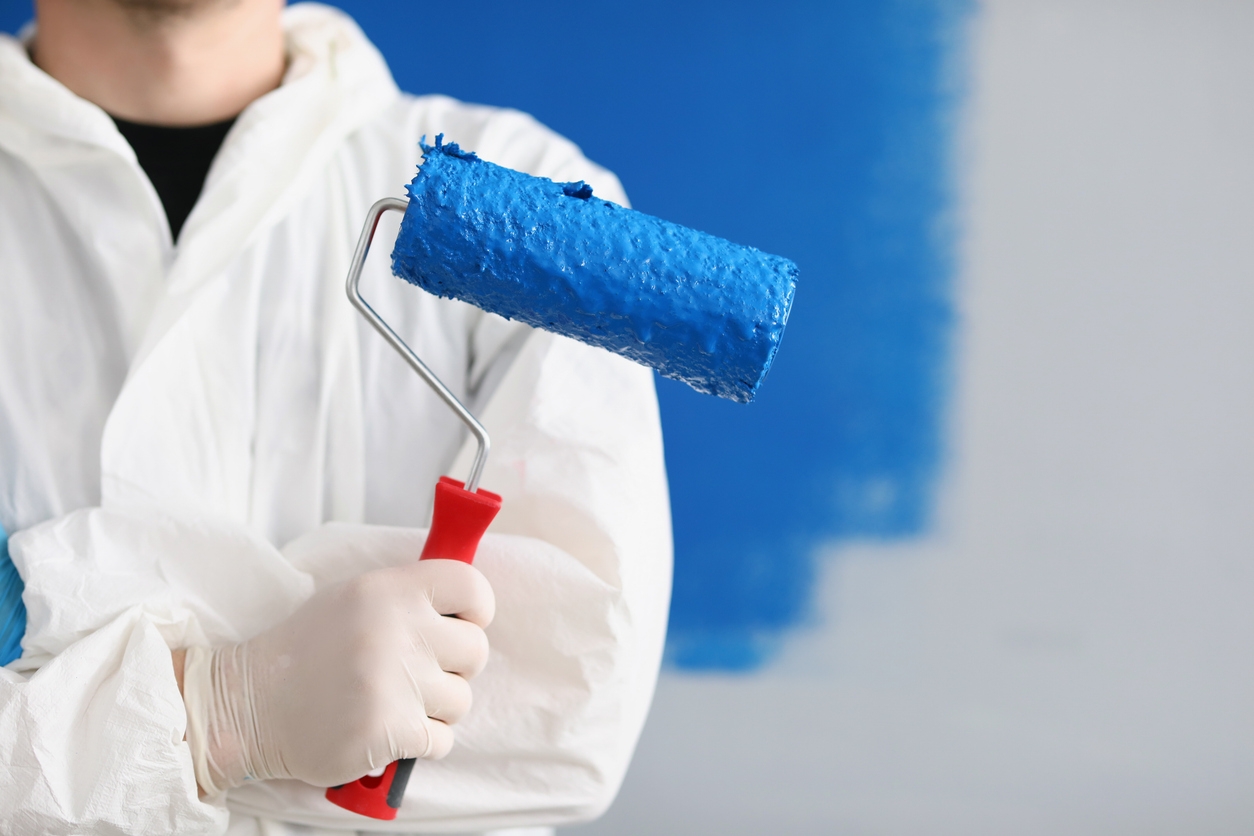Have you ever wondered, “Why do commercial painters wear white uniforms?” Is it tradition, practicality, trade identity, or are there other good reasons for a uniform’s color? Does uniform color really matter?
The answer: it matters! For commercial painters, there are practical and other benefits of wearing the colors of their trade. Without further ado, let’s explore the answers to this intriguing question.
The answer is it matters! For commercial painters, there are practical and other benefits of wearing the colors of their trade. Without further ado, let’s explore the answers to this intriguing question.
Reasons why commercial painters wear white
1. White was the color of the painter’s unions
In the early days of painter’s unions, painters adopted white uniforms to symbolize solidarity and professionalism. This choice helped distinguish painters as skilled tradespeople. The tradition stuck and is now a hallmark of the trade, symbolizing unity and pride among painters. Today, almost all professional painters wear white uniforms on the job, whether they’re union members or not.
2. Homes and buildings used to be painted white
Historically, white was a typical paint color for homes and buildings because lime-based paints, widely used in the past, were predominantly white. Painters wore white to blend with their work, minimizing the appearance of paint splatters and maintaining a clean look.
3. White keeps the painters cool
Painters often work outdoors or in hot environments. White clothing reflects sunlight better than darker colors, helping keep painters cooler during long hours of labor in the sun. It is similar to how white paint keeps a home feeling cooler.
4. The perception of cleanliness
White uniforms convey cleanliness and attention to detail. A neat, white outfit reinforces the idea that a painter values their craft and takes pride in delivering a professional job. It reassures clients that a painter will do their job with care and precision.
If you hire someone to paint your home or business, you will likely want them to walk in looking clean, neat, and professional.
5. White is more affordable to tradesmen
White clothing is typically easier to find and often less expensive than other colors. Before being made into clothing, fibers are naturally white (or close to it). White clothing is more affordable since there’s no need to dye it. After all, if you wear something that will eventually be covered with paint, why spend a lot more on clothing of any other color?
Since painters’ uniforms are regularly stained with paint, opting for an affordable, readily available color makes practical sense for the trade.
6. White lets you see the painter’s “battle scars”
Paint splatters and stains are inevitable for painters. White uniforms are the painter’s badge of honor, showcasing their hard work. These “battle scars” reflect experience and dedication, often becoming part of the painter’s identity.
7. White serves as a caution or warning that you are entering a “painting zone”
White uniforms make painters highly visible on a worksite, alerting others that painting work is in progress. This visibility helps reduce accidental interference, such as leaning on wet paint or walking into a freshly painted area.
8. The power of tradition
The tradition of painters wearing white dates back centuries and is deeply ingrained in the profession. Following this custom reinforces a sense of identity and continuity within the trade. Painters wear white simply because it has become the standard.
9. A sense of professionalism
White uniforms symbolize professionalism and expertise. They set painters apart from amateurs and DIY enthusiasts, projecting an image of trustworthiness and skill. Clients associate white-clad painters with reliable, high-quality work.
Some frequently asked questions about a painter’s uniform
Here are some FAQ’s regarding a painter’s uniform (and their answers):
1. What do commercial painters wear to protect their clothes while working?
Commercial painters typically wear clothing to protect against paint splashes, drips, and the chemicals used during painting. These include:
- Coveralls or painter’s overalls: Full-body suits that shield clothes from paint and dust.
- Painter’s pants: Specialized pants with built-in tool pockets, loops for brushes, and reinforced knees.
- Aprons or smocks: Lightweight, sleeveless garments worn over clothing for protection.
- Respirators and gloves: Protect against chemical exposure, especially when working with oil-based paints or spray equipment.
2. What are painter’s pants? And when did they become popular?
Painter’s pants are durable white trousers designed with painters’ needs in mind. They typically feature:
- Loops for holding brushes or small tools.
- Large pockets for carrying putty knives, scrapers, or small supplies.
- Reinforced areas for kneeling durability.
Painter’s pants rose to popularity in the 1970s, transcending their utilitarian purpose and becoming a fashion trend, particularly among youth. Their clean, minimalistic look and affordability contributed to their appeal. Today, they remain a staple for painters due to their practicality and comfort.
3. What kind of shoes do painters wear?
Painters often choose shoes that provide:
- Durability: Leather or canvas shoes that withstand paint spills and heavy use.
- Non-slip soles: Essential for working on ladders, wet surfaces, or polished floors.
- Easy cleaning: Shoes with smooth surfaces or coatings that resist paint absorption.
- Toe protection: Some painters prefer steel-toe shoes when working on construction sites for additional safety.
Examples include work boots, slip-resistant sneakers, or specialized painter’s footwear.
4. What is the color of “painter’s white”?
“Painter’s white” is a specific shade of white traditionally associated with painters’ uniforms. Its defining characteristics are:
- Pure white: A clean, bright white without undertones of other colors, representing neatness and professionalism.
- Symbolism: It conveys a sense of cleanliness and allows painters to spot any paint splatters easily.
- Practicality: White clothing reflects heat, making it suitable for working in warm environments.
While painter’s whites are primarily associated with their functional role, the color is also a subtle marketing tool, symbolizing precision and a commitment to a clean finish.
Now, you know why painters always wear white
Whether they are union or non-union professional commercial painters, they carry on the time-honored tradition of wearing white. White is also a practical choice—it symbolizes their trade, keeps them cool, and looks professional, among other things.
Parting words
Next time you need commercial painters to work on your homes or businesses, remember those guys in white to get the job done. Call Custom Painting, Inc. at 510-795-0903 or message us here. You will know when our crew shows up when you encounter them on the job, as they will likely wear the time-tested painter’s white.



